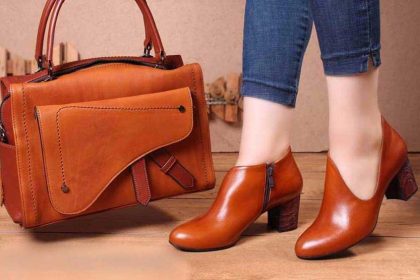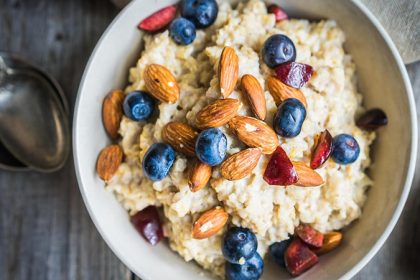Olive and its oil have both nutritional and medicinal value. According to scientists, olive is a miracle worker and is used in the treatment of many diseases, including gout, arteriosclerosis, blood pressure, indigestion, duodenal ulcers, skin diseases, nerve pain, rheumatism, diabetes, etc. . . It is applicable. Now, if you want to know the other properties of this amazing fruit and how to use it, don’t miss this article! see the truth How to prepare pure homemade olive oil with long shelf life And don’t miss how to identify the original olive oil.
Olive is a symbol of peace and wealth of Mediterranean souvenirs!
Olive is called “Olive” in English and there are almost two thousand types of it known in the world, but only about 110 types of it are cultivated in Iran. Of course, people are only familiar with 10 to 12 types of this fruit. In the past, olives were mostly cultivated in the Mediterranean, North Africa, Southeast Asia, North to South China, Scotland, and Eastern Australia. Its origin was probably the Mediterranean region and from there it reached other parts of the world.
Olives usually start to flower at the beginning of summer. Then gradually its fruit is formed and it reaches the harvest stage in late summer. At first, the olive is pale green and gradually darkens, and in late autumn its color becomes completely dark green. It is interesting to know that olive was a symbol of peace and wealth in the past. The United Nations flag also uses an olive branch as a symbol of peace.
What is the best type of olive?
- The best type of olive is the ripe green one.
- Olives have different colors, including green, yellow, red, purple and black, the most important of which are green and black olives.
- Contrary to popular belief, black olives are not obtained from the ripening of green olives, and the types of these two olives are different.
- The oil and fat content of black olives is slightly higher than that of green olives; Therefore, it has a stronger taste and smell and more calories and somewhat more nutritional value.
- Each black olive has 7 calories and each green olive has 5 calories.
- Pitted olives are more expensive, but because the center is hollowed out, the olive tissue stays in contact with brine and preservatives for a longer time.
- As a result, it loses its original taste and becomes soft and stained after a while. So it is better to buy olives with the core.
Nutritional value of olives per 100 grams | |
| Energy | 146 kilocalories |
| fiber | 3.3 grams |
| Protein | 1.03 grams |
| Riboflavin (vitamin B2) | 0.007 mg |
| Vitamin A | 20 micrograms |
| Folic acid (vitamin B9) | 3 micrograms |
| Calcium | 52 mg |
| magnesium | 11 mg |
| potassium | 42 mg |
| carbohydrate | 3.84 grams |
| fat | 15.32 grams |
| thiamine (vitamin B1) | 0.021 mg |
| Niacin (Vitamin B3) | 0.237 mg |
| sugar Loaf | 0.54 grams |
| Vitamin E | 3.81 mg |
| iron | 0.49 mg |
| phosphorus | 4 mg |
| sodium | 1.556 mg |
Fight diseases by eating olives!
- Olive is soothing and laxative and helps to heal indigestion and peptic ulcers
- It is effective in treating gout and rheumatism
- “Phenol” is one of the important nutrients in olives, which has an antioxidant and anti-inflammatory effect. As a result, it prevents the formation of blood clots in the vessels.
- It is useful for the prevention and treatment of asthma and arthritis.
- It relieves the pain caused by kidney swelling.
- It is a stomach cleanser.
- It is an aphrodisiac.
- It has antioxidant, antibacterial and antimicrobial properties.
The properties of olives on natural beauty and preserving youth
- To remove pimples and boils, crush olives and rub on the affected area for a few minutes.
- Rubbing olive oil on the skin increases softness and relieves eczema and psoriasis.
- Rubbing hair with olive oil reduces frizz and dandruff, and also makes hair shiny and soft.
- Topical use of olive oil is very useful for reducing and preventing skin wrinkles.
- Massaging the skin with olive oil reduces excessive sweating.
- An equal mixture of olive oil and glycerin removes cracked skin and prevents hair loss and graying.
- Olive oil contains polyphenols and prevents skin damage when exposed to the sun. Therefore, it is recommended to use sunscreen creams containing olive oil.
Is eating olives harmful?
- Consuming cultivated olives with food increases appetite; As a result, it is not very suitable for those who want to lose weight.
- Excessive consumption of olives causes anemia, weight loss, insomnia, and respiratory disorders. To solve these conditions, you should consume olives along with walnuts and almonds.
- Consumption of fresh and raw olive fruit irritates the stomach and may cause vomiting.
- Olive oil produces carcinogenic substances at high temperature and when fried. So use it only raw or for short roasting.
Olive leaf properties
- Olive leaves contain antioxidants, sugars, chlorophyll, wax, etc. . . Therefore, it helps to reduce blood pressure and infected wounds.
- Chewing olive leaves heals mouth ulcers.
- The combination of crushed olive leaves with honey helps to remove swelling of the eyelids and heal wounds and scratches.
- Olive leaf infusion reduces blood pressure, gout and rheumatism complications. For this purpose, wash 20 olive leaves (50 grams) and pour them into 300 grams (one liter) of water. Then boil it for 15 minutes and then strain it. Finally, add a little honey to it and eat one cup (twice a day). After two weeks, stop using it for eight days and then continue again.
- A decoction of olive leaves also helps reduce fever. It is also useful for toothache relief. You can also wash yourself with it to relieve anal and uterine wounds.
Detoxification of the body with olives!
Among all types of plant and animal food, there is no such substance as “potassium” as olives. Potassium increases muscle strength and body energy. It also regulates the secretions of the body’s internal glands. Its deficiency also causes swelling of the eyelids and lung problems. This substance also helps to detoxify the liver from urea and uric acid and increases the excretion power of the kidney. In addition, olives contain between 15 and 35% fat, but the fat is more of the useful and unsaturated type. This fruit is considered a good source of omega-9 unsaturated fatty acids and vitamin E.
Watch out for black olives!
Since it is expensive to import original black olives from the countries that produce them, some people process ordinary green olives with iron compounds to make them black. Then they sell this product at a high price. Determining whether black olives are genuine or fake is a difficult task and requires special laboratories. Therefore, under no circumstances should you use black and bulk olives without a license from the Ministry of Health. These olives not only have less nutritional value, but are also harmful to health.
Olive in the Holy Quran
The name “Olive” is mentioned six times in the Holy Quran; Once in Surah Mominun, it is indirectly mentioned as a tree that has oil. In addition, God has sworn by this miraculous fruit in Surah Tin (Walt’in-e Walzitoon = oath by figs and olives). This is enough to make sure that this fruit has amazing properties along with a special and unique taste.
RCO NEWS
RCO


















